If you’ve ever experienced the frustration of a pressure cooker burning on the bottom, you’re not alone. It’s a common problem that can be caused by a variety of factors. But there are some things you can do to prevent it from happening.
In this article, we’ll share some easy tips on how to stop pressure cookers from burning on the bottom.
Let’s dive in!
11 Common Mistakes That May Cause Pressure Cooker To Burn From The Bottom

It does not only happen to the older, classic stovetop pressure cookers, but you can also burn your food with new and sophisticated appliances like Instant Pot or Ninja, or Tefal multi-cookers.
An Instant Pot is a type of pressure cooker with a heating element at the bottom. This machine has multiple functions and modes. Its microprocessor and sensors also keep track of the temperature and show a “burn” message when they detect a temperature higher than 284°F (140°C).
One of the main reasons that activate the burn warning is stuck or burnt food on the bottom of the pot. This does not necessarily mean that your food is already burning, but it implies that the bottom of the pressure cooker is getting too hot.
The following could be one of the reasons why the food is sticking to the bottom of the pot and triggering the burn notice. These also apply to a conventional stovetop pressure cooker:
1. Not Enough Liquid In The Pressure Cooker
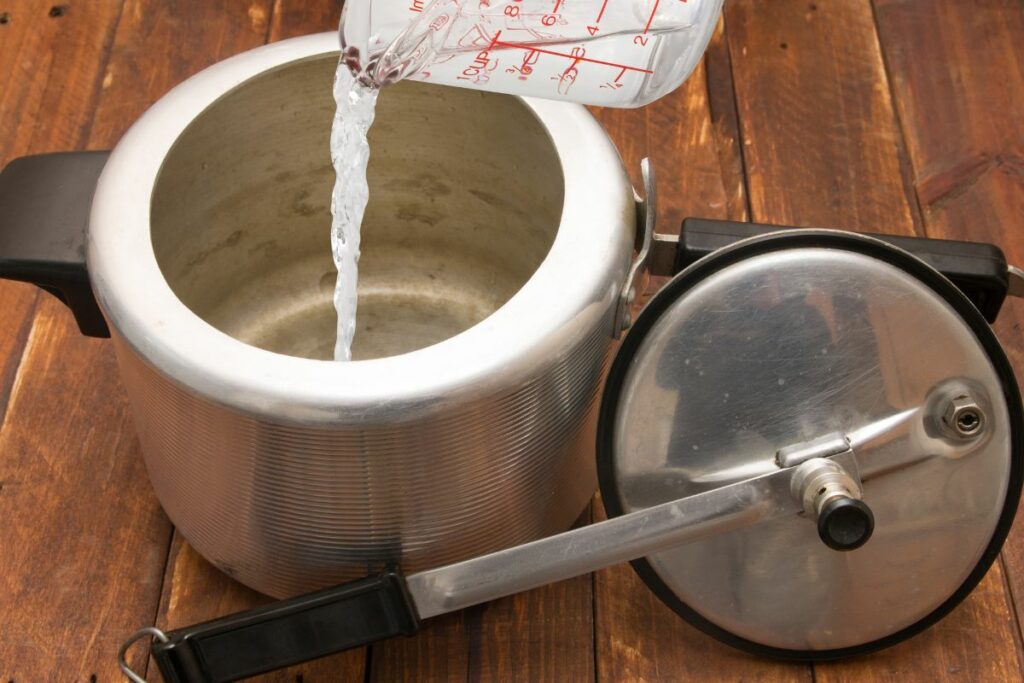
A pressure cooker uses steam rising from the water to build pressure, which heats and cooks the food. If there is insufficient liquid, the pressure will not be created, and the food will most likely burn to create a charred bottom.
Most pressure cooker recipes require at least one cup of water to create enough steam to cook the food. The water vaporizes and creates steam, which increases the pressure inside the cooker and cooks the food more evenly without burning the bottom.
Note: If the recipe says no liquid is needed, then it’s not meant for a pressure cooker, or the recipe is wrong.
2. Placing The Tomato Products At The Bottom

Many of the pressure cookers’ recipes will include tomato products in the form of tomato sauce, paste, diced tomatoes, etc. When the sugars in the tomato products come into contact with heat, they start to caramelize, getting stuck to the bottom of the pot and prompting the burn notice.
Also, tomato water’s viscosity is thicker than that of water, so it doesn’t evaporate as quickly to build steam and rather stays stagnant at the bottom. And when it is exposed to heat for too long, it can scorch the bottom of the pot.
Always add the tomato products on top after adding water, meat, or veggies. And do not stir them; this way, they will not come in contact with the bottom of the pot.
3. Sauteing Without Deglazing

Using the sauté function of a pressure cooker can often burn the bottom of the pot, especially if you are using protein-rich food or some spice mixes.
So, when you are done sautéing, press the ‘cancel’ button, add water, and give it a good stir to deglaze the pot before pressure cooking. That will dissolve browned food residue from the bottom of the pot and prevent food from getting stuck later on yet still flavoring the food you are cooking.
4. Adding Ingredients In The Wrong Order

When cooking with an Instant Pot or any other pressure cooker, it is important to remember that the order in which you add ingredients can affect the sticking and burning.
For this reason, it is generally recommended that you layer the ingredient, adding all the liquid ingredients first, followed by the more dense ingredients. This will allow the steam to build up faster without food sticking to the bottom and burning.
Once you have nicely layered all the ingredients, one key rule to follow is to never stir the ingredients. This may sound counterintuitive, but stirring can actually cause the food to stick to the bottom of the pot and potentially lead to burned food.
Also, dairy products such as milk, cheese, and cream are too thick to boil. The same goes for gravy, sauces, and flour.
If the recipe requires one of these products, then don’t add them at the beginning because they are likely to overheat and burn. Instead, add them at the end of the cycle, after the meal is done cooking, and stir them well.
If you have to add thick sauce, be sure to thin it out with stock or water.
5. Cooking Starchy Foods
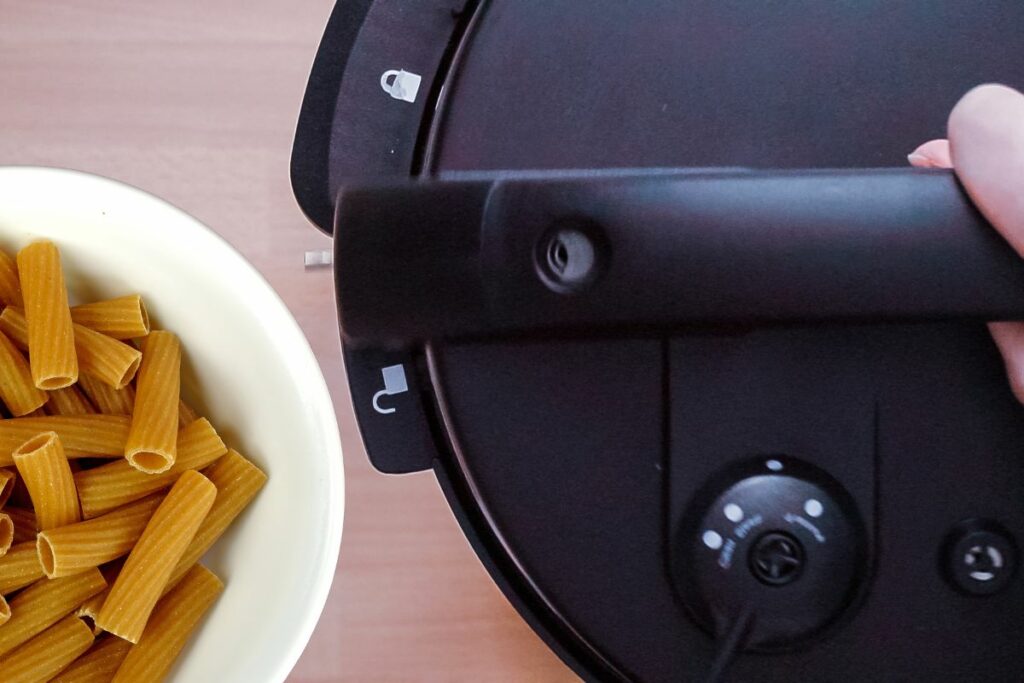
I am not saying that you should avoid cooking starchy food in the pressure cooker, but when cooking starchy foods like pasta and rice in an Instant Pot, it is important to be aware of the potential for triggering a burn notice.
This is because these foods can release starch into the pot, which can easily stick to the bottom of the pot, potentially leading to a burn. I recommend adding enough water to the pot before cooking starchy foods to avoid this. I recommend using 1.5 cups of water for every 1 cup of rice, pasta, or lentils.
Also, when cooking with starchy ingredients, it is important to add them last and not stir them.
6. Using Too High Temperature
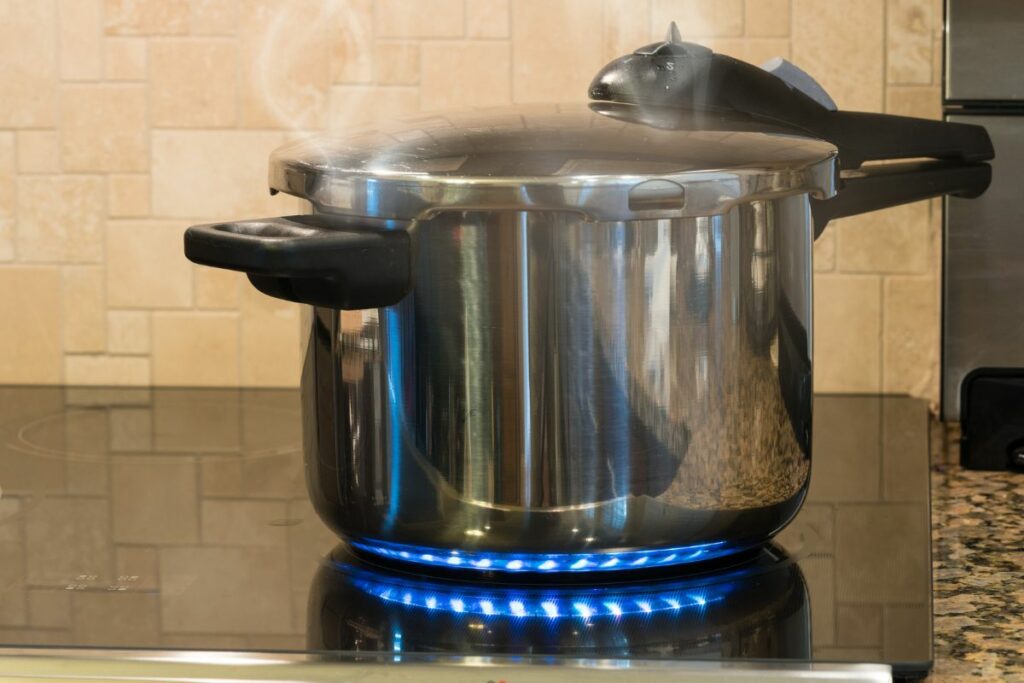
When cooking in an Instant Pot, you may be tempted to use higher temperatures to speed up the cooking time, but unfortunately will not make the food cook faster. In fact, it may lead to the food burning or sticking to the pot without having a chance to cook inside thoroughly.
Always use the recommended temperature in the recipe or in the appliance user manual.
7. Cooking Food Too Long
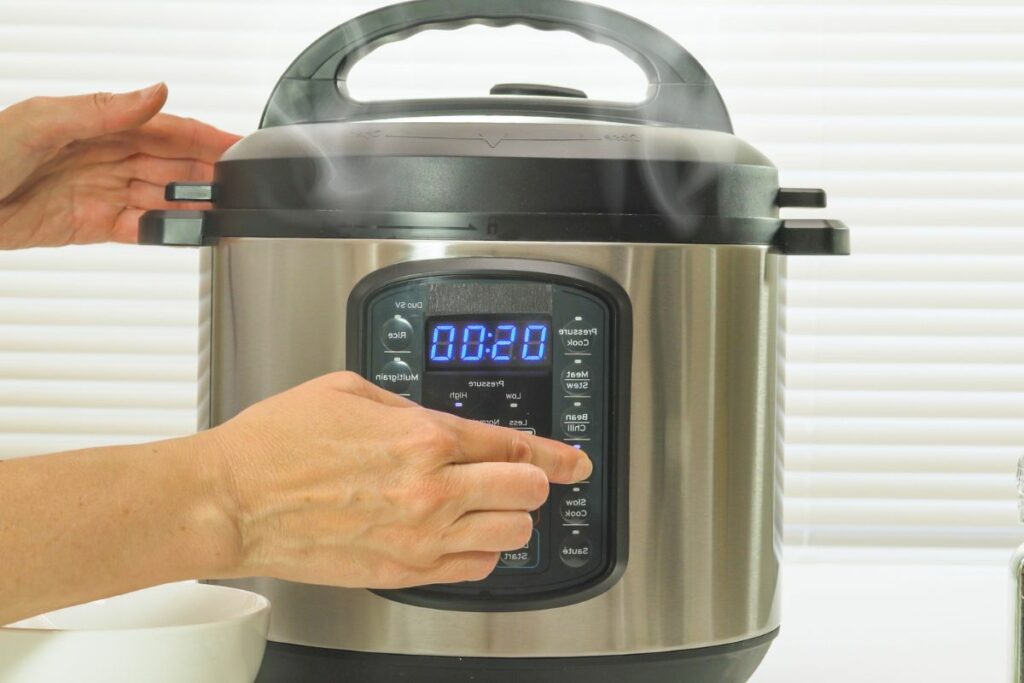
This is a no-brainer, but if you don’t have much experience using a pressure cooker, then it can easily happen. It is less like to happen with Instant Pot whit multiple automated settings, but you can easily overcook and burn your food in a classic stove-top pressure cooker.
Luckily, there is an easy fix. Just follow the recipes or user manual’s recommended cooking time and set a timer for the cooking time, so you will know when the food is ready.
7. Overfilling Your Pressure Cooker
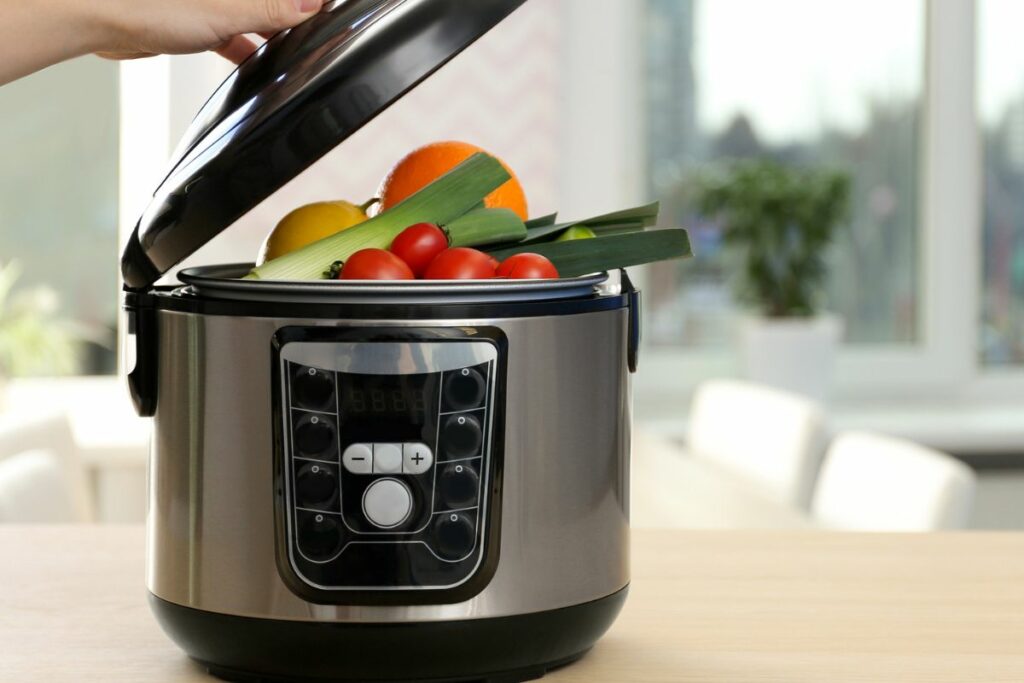
If you overfill your pressure cooker, the pressure inside can become dangerously high, and the food may not cook properly, or it can burn and stick to the bottom of the pot. To avoid this, make sure you don’t overfill the cooker using recipes that are meant for the size of our appliance.
The good rule of thumb is that your pressure cooker is only full two-thirds of its capacity.
8. Forgetting To Set The Pressure Valve To Seal From Venting

The pressure valve at the top of the pressure cooker must be set at ‘sealing.’ This valve makes sure that the pressure is sealed inside.
If you accidentally start the pressure cooking process with the valve on ‘venting,’ the leaking steam will decrease water levels inside the pressure cooker, and the food could burn on the bottom, similar to what I talked about above when not adding enough liquid.
9. There Is A Faulty Sealing Ring
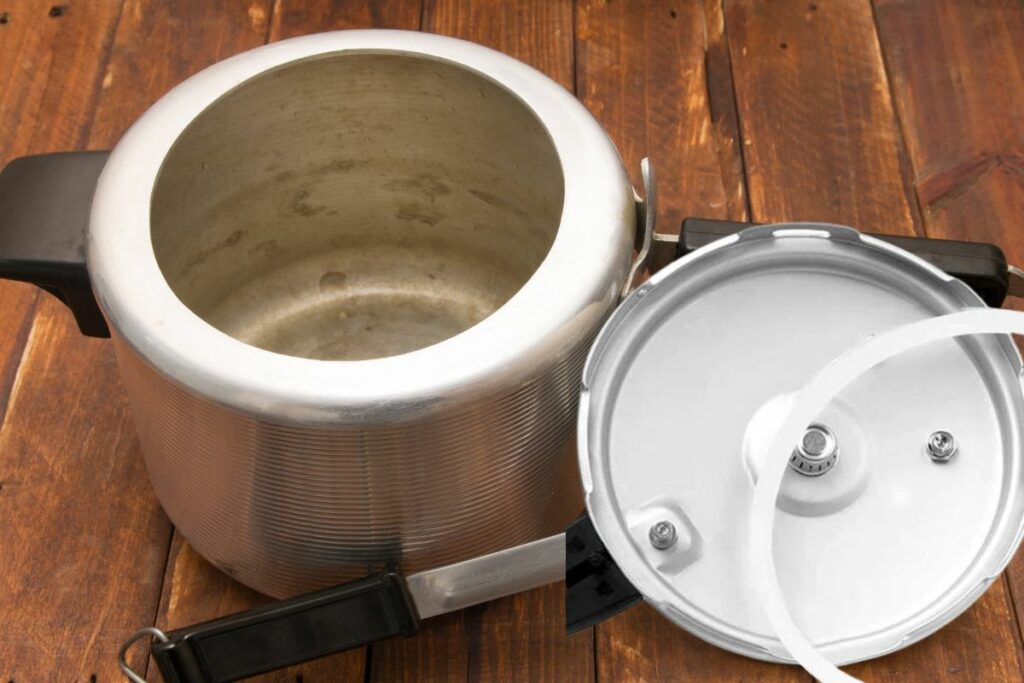
A silicone sealing ring is located inside the instant pot’s lid. This silicone ring is what seals the steam inside the pressure cooker. If it is damaged or dislocated, the steam will keep shooting out until the water runs out, and the food will inevitably get stuck to the bottom and burn.
If you take it out for cleaning, make sure to put it back correctly. It should not be loose or dislocated.
The silicone ring needs to be replaced every two or three years. So if yours starts to look old and withered, it’s time to replace it soon.
10. Using a Dirty Or Damaged Pressure Cooker
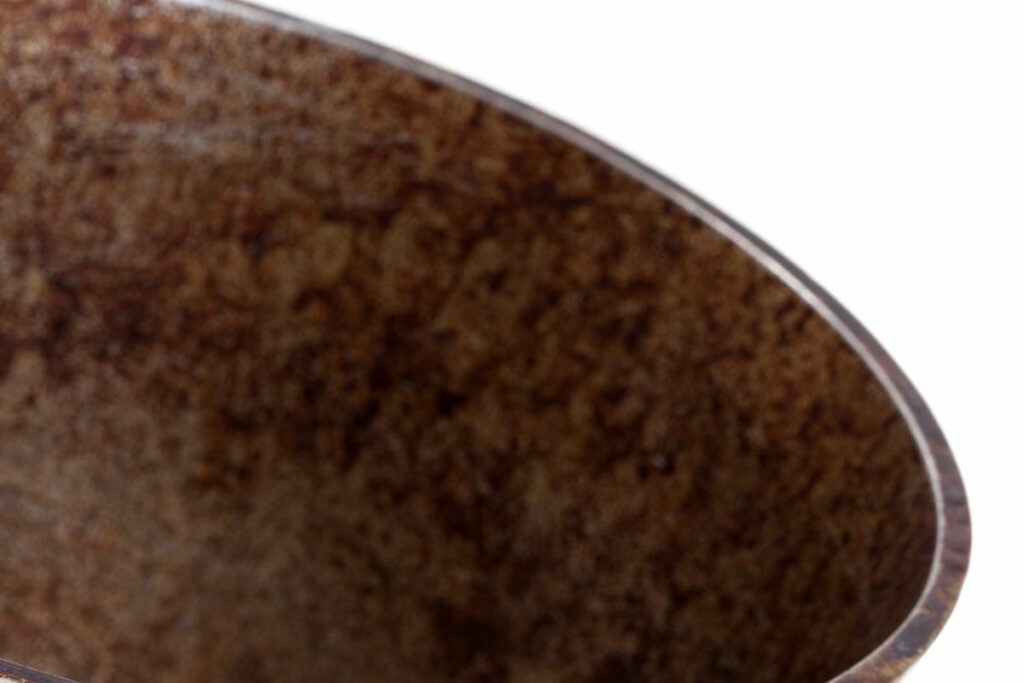
Perhaps I should have put that one on the top of the list, but using a pressure cooker that is not properly clean or the pot’s non-stick coating is damaged is a sure way to get the food stuck to the bottom of the pressure cooker.
To prevent this, always make sure to use an undamaged and well-clean pot when pressure-cooking food.
11. Not Using Racks And Baskets
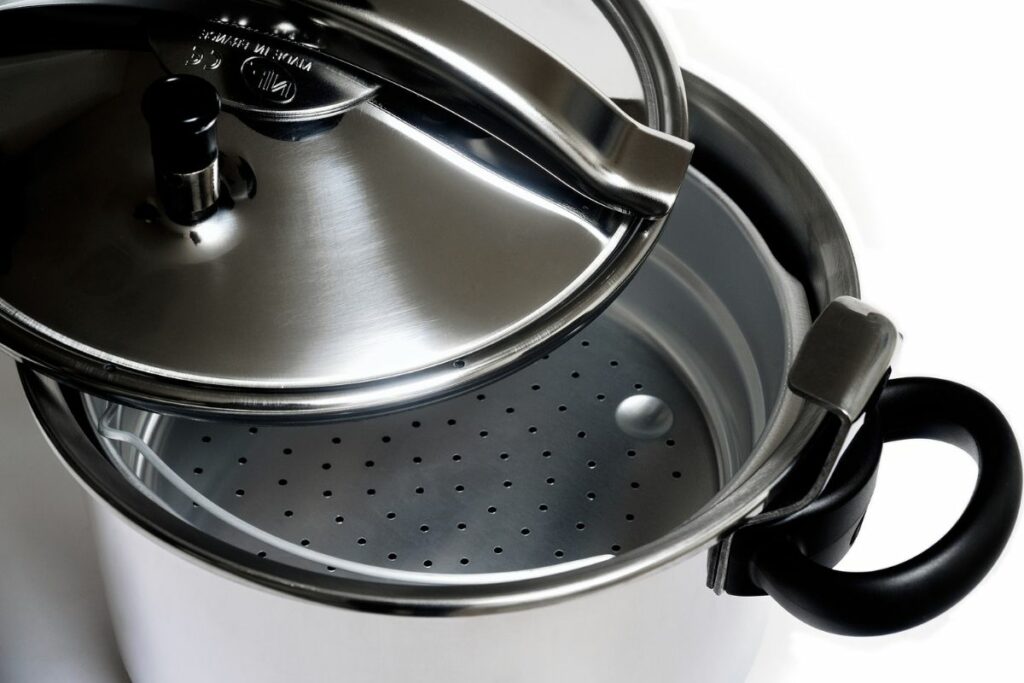
Pressure cooker baskets and racks are helpful accessories that let you cook different foods simultaneously. By using a rack or basket, you can cook multiple items in your pressure cooker without them coming into contact with each other or with the bottom of the pot itself.
This is not only useful if you want to cook two or more items that have different cooking times, but by using a rack or basket, you can prevent your food from sticking to the bottom of the pressure cooker.
To prevent sticking and burning on the bottom, place the longest-cooking foods at the bottom, and the foods that need the shortest cooking time or that are prone to sticking and burning, are placed at the top so you can easily remove them when cooked.
The pressure cooker racks are really great for cooking foods and dishes that require that the cooking container be kept off the bottom of the pot. This allows for even heat distribution and prevents sticking and scorching.
Read Also: How To Boil Milk Without Burning Or Sticking?
Conclusion
If you are a beginner at using pressure cookers and Instant Pot, or you are just getting used to using your new appliance, you are bound to make some errors. Sometimes, when you are in a hurry, you might make a mistake and increase the recommended temperature of the recipe’s instructions or the manual.
There could be other things causing the bottom of the pot to burn. Sometimes, it might just be because the instant pot is not working correctly. You will start to get the hang of it as you use it more and see the burn message less and less. After all, only with some practice and experience can you stop the pressure cooker from burning on the bottom.
If you have any other tips and advice to add to the list that could help prevent burning at the bottom, be sure to let everyone know in the comments below.
